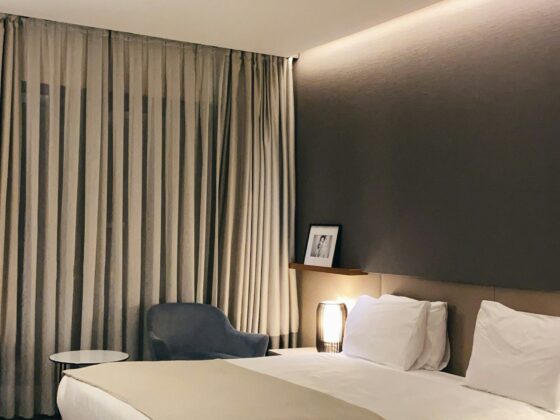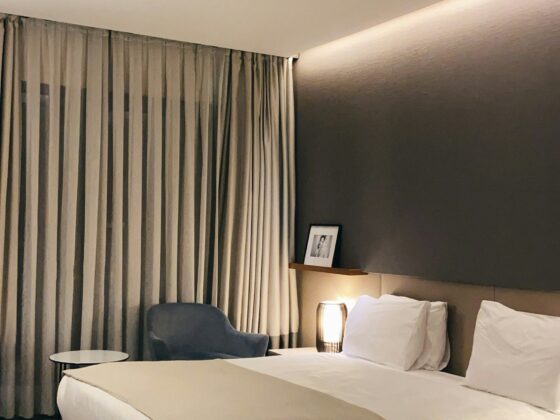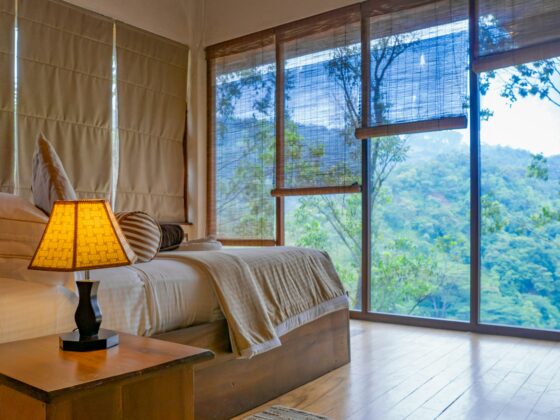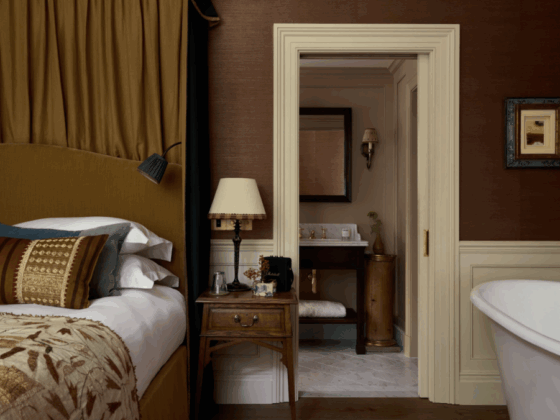Best ways to optimize a small hotel room
A small hotel room is considered to be anything from 150 to 300 square feet (or 14 to 28 square meters), though ideally it should be at least 200 square feet (18.5 square meters) – excluding the bathroom. European hotel rooms tend to smaller in size at around 160 square feet, with an average American hotel room being approximately 300 square feet.
When you have such limited space to surprise and delight your guests, it’s important to keep things impeccably tidy, avoid any clutter, and to capitalize on every square foot (or square meter) you have available. Let’s take a look at some of the top ways to optimize a small hotel room.
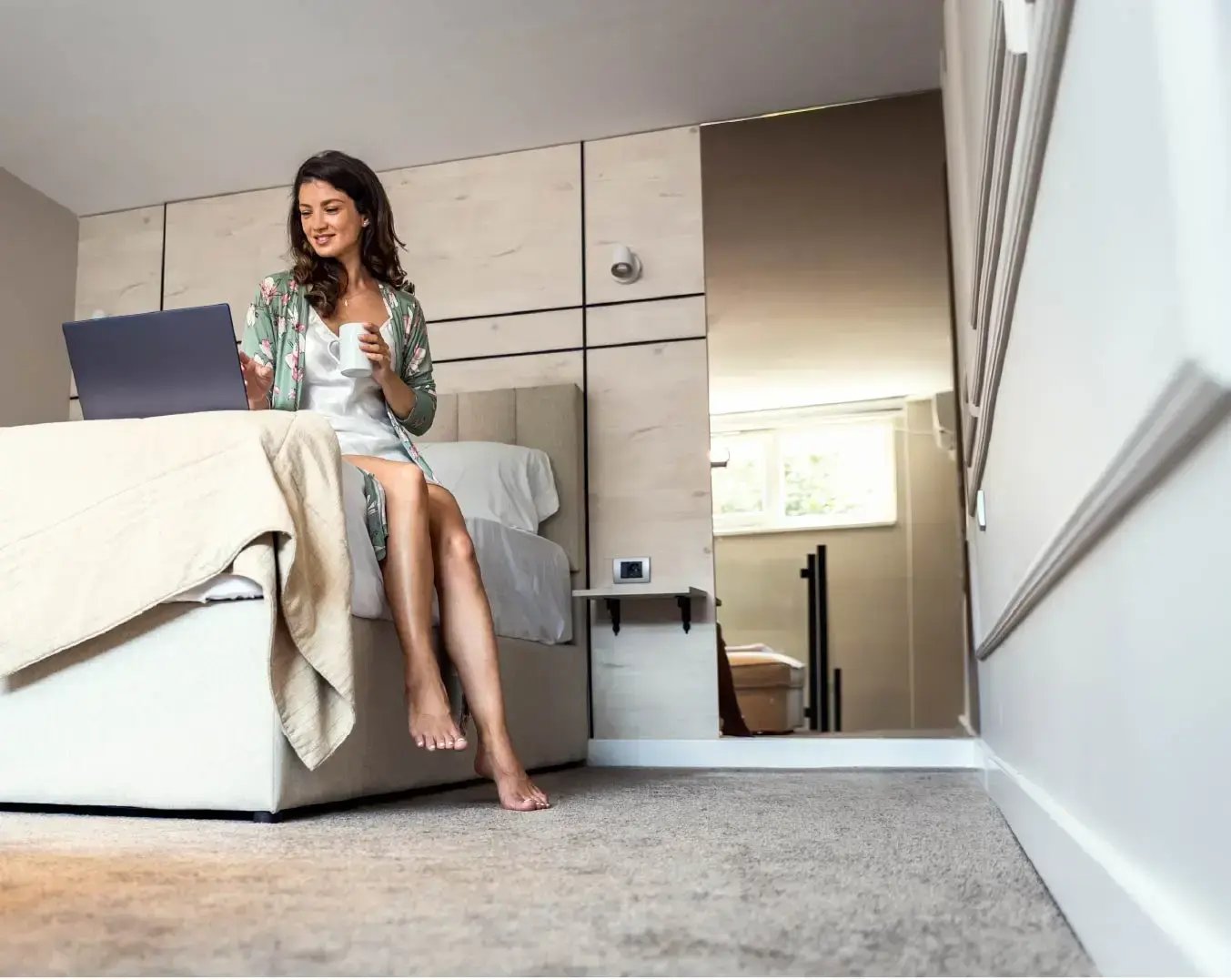
Follow minimalist design principles
Minimalism is a great go-to design style for small spaces, offering a “less is more” approach that prioritizes simplicity and functionality. Every item in the hotel room should serve a clear purpose, ensuring the space remains tidy and uncluttered.
Choosing white and neutral tones isn’t just a timeless and stylish option – it also makes the room feel more spacious by reflecting light and creating an illusion of openness. Adding soft neutral hues introduces warmth, making the room feel inviting.
Plus, this clean backdrop allows design elements like artwork or furnishings to shine, creating a calm, orderly atmosphere that shifts the focus away from the room’s size.
Play around with lighting
Lighting is a powerful tool for balancing out the feel of a small room. Experiment with different lighting colors and temperatures to create both functionality and atmosphere. For example, reading lights around 3000K provide a warm, cozy glow that helps guests relax and drift off to sleep, while also being gentle on the eyes for reading. On the other hand, desk lamps with a higher color temperature, like 4000K, offer a brighter, more focused light ideal for work or productivity.
Incorporate spotlights and indirect lighting to illuminate the corners of the room, giving the illusion of more space and depth. Thoughtfully designed lighting enhances the room’s ambiance, drawing attention to its atmosphere rather than its size. With the right lighting, a small room can feel both spacious and inviting.
Be upfront
Being upfront about your room size will help manage guest expectations. While being transparent is key, it’s possible to reframe the small room as an “intimate space,” “small in size, big on comfort,” or “perfectly cozy and thoughtfully designed.” The more you focus your marketing language on how the room’s compactness works in a guest’s favor, the less of an issue its size will be. Be sure to include exact room dimensions in your listings on OTAs and your website, positioning the room’s compactness as a positive feature. When framed the right way, small can enhance the overall guest experience – it’s all about how you present it. Remember, words are everything.
Take the sustainability angle
Small rooms are more energy efficient because they take less time to heat up and cool down and need less lights to light them up. By showing guests how small can be equivalent to more sustainable, you are giving a great reason to say yes. Read more about the best sustainability practices.
Keep clutter to a minimum
We’ve already mentioned minimalism, and de-cluttering is a key part of this. Concealing wires and cables within the walls or along the molding can instantly improve the visual flow. Keep furniture to a minimum – only include pieces that enhance the space and avoid overcrowding. For amenities, display them in a simple, organized way—perhaps neatly arranged in the shower, on a shelf, or tucked away in a drawer.
Use the space you have available
When space is tight, every inch counts. Keep things off the floor as much as possible to maximize your limited space. Install hooks behind doors for towels and opt for wall-mounted shelves instead of bulky chests of drawers. For items like ironing boards, encourage guests to request them from the front desk instead of storing them in the room, which will ultimately keep the space cleaner and more organized.
In the bathroom, consider adding drawers for storing amenities, hair dryers, and extra towels instead of leaving everything out in the open. You could even raise the bed to create storage space underneath for guests to stow away their luggage, keeping the room neat and spacious.
Utilize mirrors to create the illusion of space
Mirrors can work wonders in small rooms, making them feel larger and brighter. Instead of just hanging a mirror on the wall, try placing one on the outside of the wardrobe. If possible, have the wardrobe built into the wall to open up more floor space. Position mirrors strategically to reflect natural light from outside, which can make the entire room feel more airy and expansive.
Compensate with other features
Once you’ve established that the room is small, you can use it as a chance to highlight other unique features of the hotel. Whether it’s a great price, an unbeatable location, top-notch amenities, or another standout offering, position the compact room as part of the overall hotel experience. This way, guests view the smaller size as just one element of what makes the hotel special, rather than something that works against it.
Create cozy lounge areas in the hotel
Since guests may not want to spend all their time in a small room, consider offering cozy lounge spaces throughout the hotel where they can relax. Think comfortable couches, a selection of books or magazines, tea service, or a TV. Ideally, this area should be separate from the bar or restaurant, acting as a “living room” away from their room. This creates a relaxing atmosphere where guests can unwind and enjoy the hotel in a different way.
Use multi-functional furniture
In a small room, every piece of furniture should work hard to serve more than one purpose. Look for foldable pieces or items that double as storage — like ottomans that hide away extra things, fold-out desks, or drop-leaf tables that can be tucked away when not in use. These clever furniture choices help maximize space and keep the room feeling spacious and organized.
Conclusion
With these tips and tricks in your arsenal, your guests will feel right at home, no matter how much space they have. After all, a great guest experience goes beyond just the room – it’s the blend of exceptional service, modern amenities, cleanliness, and thoughtful touches that will make your hotel stand out. By making the most of small rooms, you can turn them into a unique selling point, helping your hotel shine in a competitive market.
Download our guide “The Best Ways to Reimagine Your Hotel Spaces”



